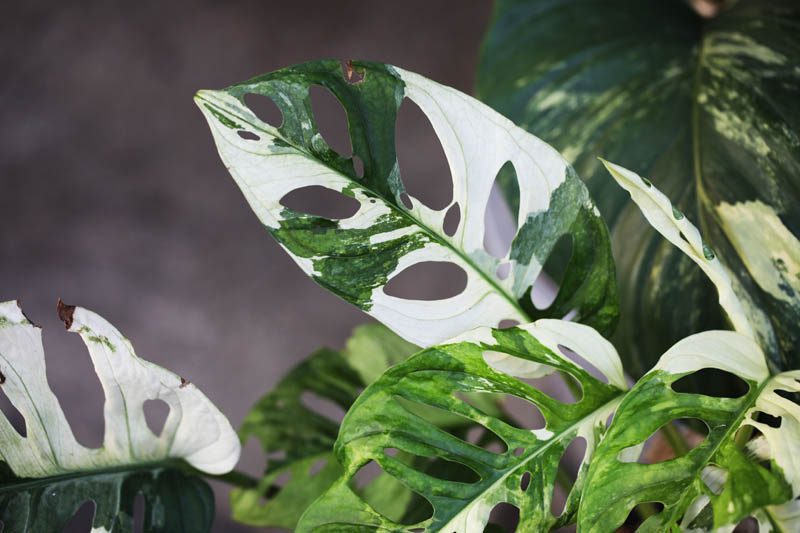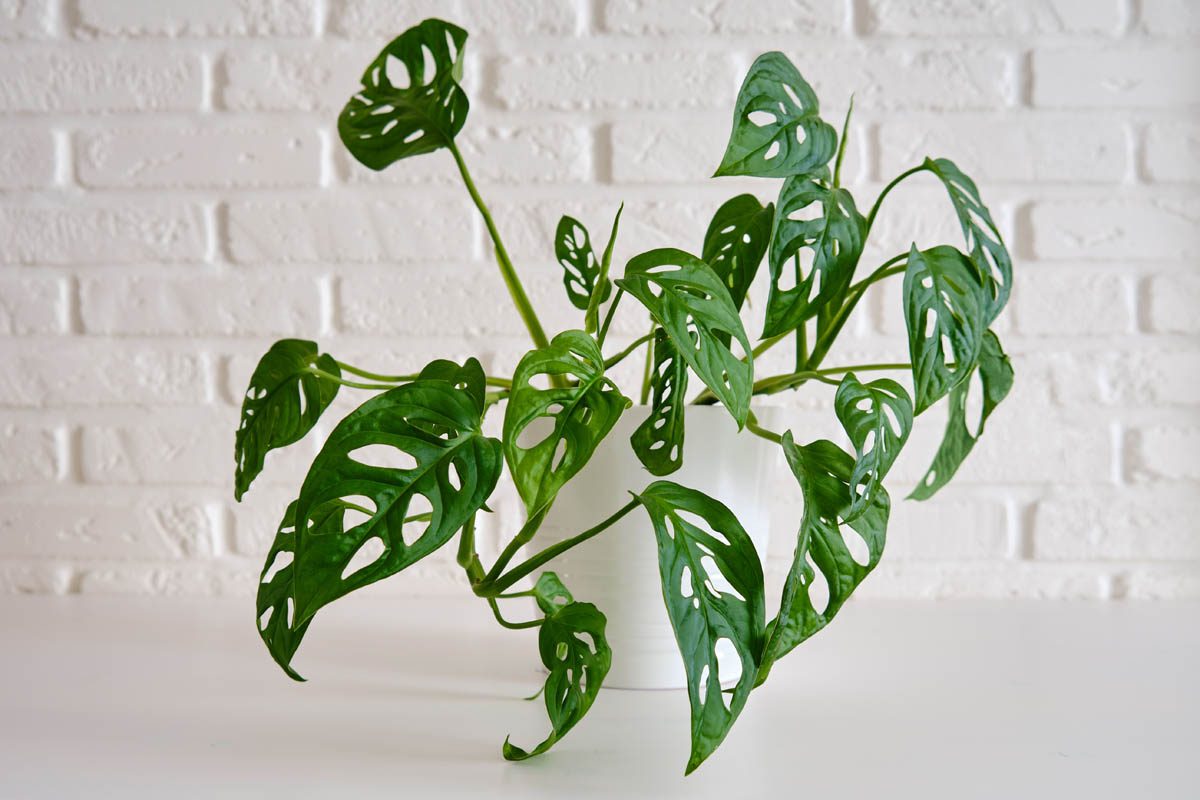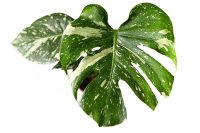Commonly known as Swiss cheese plant or Swiss cheese vine, Monstera adansonii is toxic to dogs. The toxic principle is insoluble calcium oxalate crystals that penetrate the delicate oral mucosa, causing pain, burning and swelling.
What is Monstera adansonii?
| Family | Araceae |
| Botanical name | Monstera adansonii |
| Common names | Swiss cheese plant, Swiss cheese vine, Adanson’s monstera, Monkey mask, Five holes plants |
| Toxicity | Toxic to dogs |
| Toxic parts | All parts |
| Toxic principle | Insoluble calcium oxalate crystals |
| Severity | Mild to moderate |
Monstera adansonii is a climbing vine native to Central America and South America. It shares its common name Swiss cheese plant for the fenestrations (holes) in its leaves. This easy-to-care-for plant is usually grown as an indoor plant, for its eye-catching heart-shaped and fenestrated foliage. It should be provided with a climbing pole. Plant collectors may also be interested in the variegated M. adansonii, which used to command a high price tag, but is becoming more reasonably priced.
Related: Can you grow variegated Monstera from seed?

M. adansonii has a number of common names, which includes Swiss cheese plant. This can be somewhat confusing, as Monstera deliciosa is also a member of the Monstera family. M. adansonii has small leaves approximately 4 inches (10 cm) long, while M. deliciosa has considerably larger leaves. The toxic principle of both plants is the same.
Toxicity
The toxic properties are insoluble calcium oxalate crystals (CaOx) known as raphides. Insoluble calcium oxalate crystals cause mechanical irritant contact dermatitis, due to the physical injury it causes to the oropharynx.
Most dogs won’t injest much plant matter due to the rapid onset of pain.
Clinical signs
Symptoms relate to acute oropharyngeal pain due to contact with needle-sharp calcium oxalate crystals.
- Oral pain and intense burning
- Pawing at the mouth
- Anorexia (loss of appetite)
- Drooling
- Soft tissue swelling
- Vomiting
- Difficulty swallowing (rare)
- Difficulty breathing (rare)
First aid
Remove any remaining plant matter from the dog’s mouth if it is safe to do so and offer a drink of something tasty such as milk. The response can look alarming to caregivers, however, symptoms are rarely life-threatening unless swelling develops, which can cause an airway blockage. This is a medical emergency.
Treatment
Contact a veterinarian or pet poison helpline if your dog has ingested any part of M. adansonii. If the dog appears otherwise well, they may recommend a wait-and-see approach. Dogs experiencing clinical signs should see a veterinarian immediately.
There is no antidote to M. adansonii ingestion and the goal of treatment is to prevent further absorption and manage clinical signs. If ingestion was recent, the veterinarian can administer medication to make the dog vomit, followed by activated charcoal to bind to any remaining plant matter in the gastrointestinal tract. Additional treatments may include Intravenous fluids to prevent or treat dehydration and electrolyte derangements and gastric protectants to protect the mucosal lining of the stomach from gastric acid.
Prognosis
The prognosis for M. adansonii ingestion is excellent and most dogs will make a full recovery.
Prevention
The only effective way to prevent M. adansonii ingestion is to avoid toxic plants, or grow in areas where the dog can’t access them. Most dogs won’t show much of an interest in chewing plants, however, some, especially puppies will chew anything.
Julia is a writer and landscape consultant from Wollongong with a love of horticulture. She had been an avid gardener for over 30 years, collects rare variegated plants and is a home orchardist. Julia is passionate about learning and sharing her knowledge of plant propagation and plant toxicology. Whether it’s giving advice on landscape projects or sharing tips on growing, Julia enjoys helping people make their gardens flourish.




